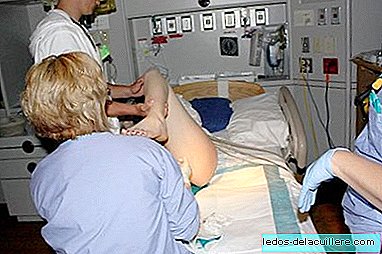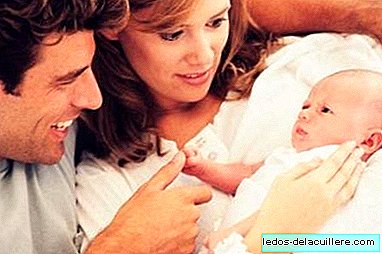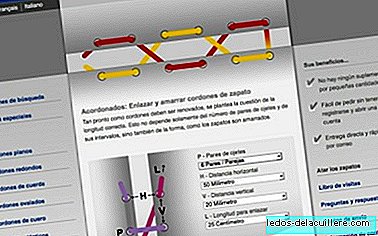
A little over a month ago we talked about the practices that could be recommended when giving birth to prevent tearing or other trauma to the perineum. Today we are going to continue talking about that area of women who try so hard to take care of themselves during childbirth, with greater or lesser success, dedicating a few words to the controversial episiotomy.
The episiotomy It is a technique that began to be used in the eighteenth century that today has become widely used, so much so that in most Spanish hospitals it has been used in more than 90% of vaginal births.
However, given that there is little scientific evidence to support its effectiveness, its use is being very restricted and what seemed a necessary act has become a resource to be used at certain times. With this entry we will try to know what is the effectiveness of episiotomy during childbirth and what the scientific studies say about it.
Why episiotomy is such a controversial procedure
The idea of doing the episiotomy it was to reduce the risk of perineal tears, pelvic floor dysfunction and urinary and fecal incontinence. In addition, performing the episiotomy, it was intended to produce more spontaneous deliveries vaginally, because by making the exit more extensive the expulsive period was shortened (it was believed that, being faster the expulsive there were more vaginal deliveries).
There was not enough data to support these assumptions, but in spite of that episiotomy became a routine measure, even when associated with some potential risks, such as the extension to third and fourth degree tears (some cuts, when the baby leaves, are going to be more, becoming as or larger than the tears that are intended to be avoided), dysfunction of the anal sphincter and dyspareunia (pain in sexual intercourse).
What scientific studies say about episiotomy
A systematic review of 26 studies, conducted in 2005, determined that, comparing the use of routine episiotomy with a restrictive use of it, there were no differences in the results. That is, the tears were the same and the pain and the use of the pain medication were also the same.
They also saw that the episiotomy did not provide any benefit in preventing urinary or fecal incontinence and that it did not improve pelvic floor relaxation either. Similarly, the women who had had their episiotomy seemed to have not seen their sexual function reduced (I understand they had the same relationships as the others), although they did have more pain during intercourse.
Another study dating from 2006, in which it was tried to know how episiotomy affected the anal sphincter of women showed that the overweight of the child and the mediolateral episiotomy are direct risk factors for lesion of the anal sphincter, although they also highlight that only one 22% of mediolateral episiotomies were done correctly.
A third study showed that those women who had suffered severe perineal trauma in a previous delivery had no more risk of having it again than any other woman, so there is no evidence to suggest that it is better to do an episiotomy even if traumas They were third or fourth grade.
Current recommendations regarding episiotomy
That said, the current recommendations regarding episiotomy are as follows:
- Routine episiotomy should not be performed during spontaneous delivery.. Only do it if it is really considered necessary.
- The episiotomy will be carried out if there is clinical need (if it is interesting that the delivery is faster due to suspected fetal distress, for example).
- Before performing the episiotomy analgesia should be administered, unless it is performed for an emergency.
- Episiotomy should not be performed routinely during a vaginal delivery in women who had third or fourth degree tears in previous births.
I don't know how they will do it now in most Spanish hospitals today. A few years ago it was a routine, a logical consequence (well, it wasn't, but people assumed it that way) of giving birth. The women even wondered about their points ("and how do you have the wound?", "How do you have the points?") And nobody, at least in ordinary people, this practice was questioned too much.
Now times have changed, some mothers and some professionals have struggled a lot because science realized that many episiotomies were worse than the tear that could have occurred and the side effects were very similar. Given this situation, the most logical thing is what is recommended: "do not touch me, unless you see it really necessary."












